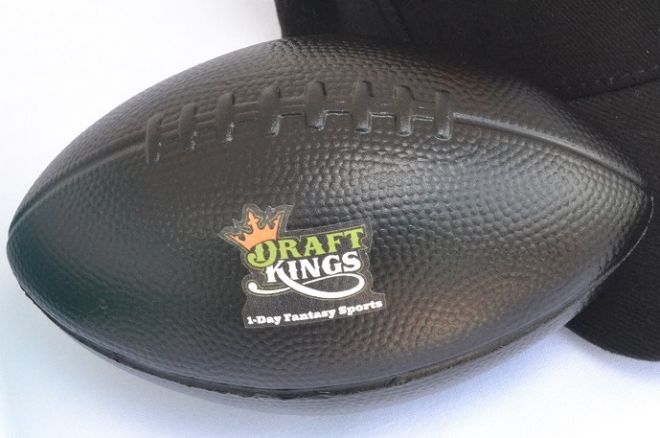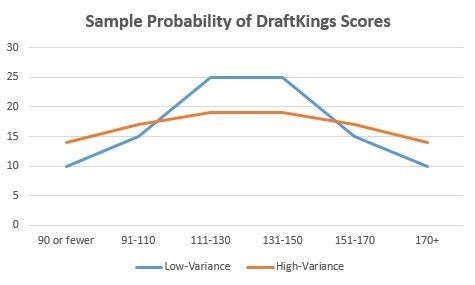Five Tips to Help You Win Fantasy Football��s $1 Million Week 6 Prize

Jonathan Bales is the author of the Fantasy Football for Smart People book series and a DraftKings Pro.
The daily fantasy sports world has seen somewhat of a paradigm shift with the massive success poker pros have witnessed playing on DraftKings this year. Last week, I suggested that, due to similar required skill sets, poker players are already equipped to win at daily fantasy sports; the same basic elements of risk/reward, game theory, and process-oriented thinking are a foundation of both games.
Well, the poker-to-fantasy revolution took a major step forward this week, as poker pro Matt Smith (SamENole) took down the Millionaire Maker on DraftKings, turning a $27 entry into $1,000,000. Quickly transforming into one of the game��s elite players, SamENole beat a field of 92,400 users by nearly seven full points, which is simply remarkable. Fellow poker pro Brian Hastings (Stinger88) checked in at fourth, raking in a $40,000 cash, and there were numerous other poker pros who finished in the top 100.
With the popularity of Week 5��s Millionaire Maker, DraftKings is running the exact same tournament again this weekend for the Week 6 contests��$27 entry, $2.2 million in prizes, seven figures to first place. It��s a good time to be in the daily fantasy sports industry.
As I explained last week, daily fantasy sports is currently a very inefficient market, and the inefficiencies are growing rapidly as more and more casual players start to put their money on the line. Here��s how you can take advantage to cash in on DraftKings this Sunday.
Tip No. 1: Pick your QB/WR pair and diversify around it
Three of the top four lineups in the Week 5 Millionaire Maker had Peyton Manning and Demaryius Thomas��a duo that exploded for over 81 fantasy points��and the majority of the best lineups paired a quarterback with at least one of his receivers.
The reason that you should pair a quarterback and a wide receiver (or tight end) is because it increases the upside of your lineup. The production of your receiver is obviously dependent on how your quarterback performs, so pairing them creates a symbiotic relationship within your lineup that makes it higher-variance��a good thing in a big tournament.
You��ll need to hit on a high-upside quarterback/receiver pairing to win in Week 6, but don��t be afraid to use the same pair in multiple lineups. If you really like Manning and Thomas again this week, use them in a few lineups with different groups of players around them.
The idea is that, if Manning and Thomas have a big game, you��ll be rewarded for hitting on that stack because at least one of the combinations of players around them will be good enough to help you cash. You don��t need to diversify to the point that you��re playing anyone, but certainly mix and match your core values around your favorite QB/WR tandem to act as a hedge and to ensure that the success of those lineups mirrors the quality of the duo.
Tip No. 2: Choose players with multi-touchdown upside
Again, the name of the game here is creating as high of a ceiling as possible. You don��t want ��good,�� you want ��elite.�� Basically, you��re trying to use astute roster construction to improve your odds of hitting on a really high-scoring lineup.
To demonstrate the thinking behind this idea, here��s a sample distribution of DraftKings scores using both a low- and high-variance approach.

With the high-variance approach, you generate greater access to both outstanding and horrible scores, which is a positive in a tournament. A wise man once said, ��If you ain��t first, you��re last,�� and the Ricky Bobby approach to daily fantasy sports is actually a smart one in certain situations, i.e. when you crave upside.
When I��m creating a tournament lineup, I ask myself, ��Can this player score two touchdowns on a semi-consistent basis?�� If the player is somewhat dependent on touchdowns for production, he can make for a smart tournament play because his points will tend to come in bunches. That��s in contrast to a slot receiver, for example, who sees a bunch of short targets (and thus has a high level of consistency), but doesn��t have much touchdown upside.
Note: weight is the best physical predictor of touchdowns for receivers. All else equal, target heavier receivers.
Tip No. 3: Use a relatively balanced approach to roster construction.
There are times when a min-priced player with tons of upside is available��such as when a starting running back gets injured and his talented backup is thrust into the lineup��in which case you clearly can benefit from a high/low roster construction strategy.
Otherwise, balanced lineups make sense in big tournaments because, even if they don��t optimize your projection points, they can optimize your probability of winning by enhancing the likelihood of hitting on all of your selections.
Imagine that you��re deciding between a Julio Jones/Jeremy Kerley pairing versus a Brandon Marshall/Vincent Jackson combination. Both duos cost a total of $12,000 in cap space on DraftKings this week. Let��s say you have both pairs projected with the same number of points, too. What��s the right choice?
In all likelihood, it��s Marshall and Jackson, due to a higher probability of hitting big with both players. Let��s say we estimate the chances of each player scoring 25 fantasy points to be as follows:
- Jones: 50 percent
- Kerley: 10 percent
- Marshall: 30 percent
- Jackson: 20 percent
Even with Jones projected far ahead of everyone else, the odds of hitting on both Jones and Kerley together are just 5.0 percent��compared to 6.0 percent for Marshall and Jackson. Balanced draft approaches are typically superior in terms of maximizing the likelihood of nailing every selection, which is a prerequisite to winning a big tournament.
Also note that DraftKings awards bonus points for 300-yard passing performances and 100-yard rushing/receiving games. You should generally seek players with the most access to those bonus levels, which limits the worth of cheaper players, even if they offer value in terms of a median projection.
Tip No. 4: Try to identify a cheap, under-the-radar player with a high ceiling
When you break things down in terms of probabilities, you can see why it��s important to worry less about projections or player values (in tournaments) and more about increasing your lineup��s access to a really high score. And while a balanced lineup approach is generally preferred over a high/low strategy, there��s clearly value in hitting on a really cheap player who 1) returns awesome value and 2) affords you lots of salary cap relief so you can go after studs.
You shouldn��t force a min-priced player into your lineup and just hope he hits��again, all else equal, go with a balanced approach��but if you can identify a cheap, low-usage player who has a big game, that��s going to give you a really nice edge over the field.
The problem that most people run into is finding elite upside at a cheap price. In most weeks, it doesn��t really exist. But if you think you��ve found something and you manage to hit on it in Week 6, your odds of winning the Millionaire Maker will soar.
Tip No. 5: Use the late-swap feature
DraftKings has a feature that allows you to sub out any player in your lineup whose game has not yet started (provided you replace him with another player whose game hasn��t yet kicked off and you��re still under the $50,000 salary cap).
The feature was made primarily for injuries and late scratches so that you aren��t left hanging if the unexpected happens, but you can utilize the late-swap feature to improve your odds of winning even if all of your players are suiting up.
Let��s say you��ve nailed your picks and, heading into the Monday night game, you��re only five points out of first place and you still have Frank Gore left to play. That��s awesome, but you notice that a user who is one point ahead of you also has a running back. You do a little digging and figure out that, based on his salary cap space remaining, it must be Gore. In the daily fantasy sports world, this is the equivalent of drawing dead.
To give yourself a shot, you can use the late-swap feature to swap out Gore for Zac Stacy��also in the Monday night game and $300 cheaper. Stacy might be the worse play in a vacuum, but he��d give you an ��out�� and a chance to win the $1 million prize.
I typically check my lineups as the 1 p.m. games come to an end, searching for situations in which it might benefit me to either minimize risk or go a little more high-variance. Using the late-swap feature allows me to hedge, for example, if I have a lot of money riding on one player.
The majority of your work will be finished once the first games kick off on Sunday, but don��t overlook the advantages of potentially using the late-swap feature to give yourself a small additional edge after kickoff.
**To get you started on DraftKings, I created a 39-page PDF with content on how to win big tournaments (and some other bonus info) that you can download here for free.








